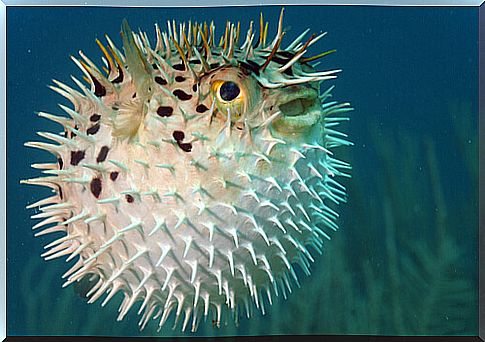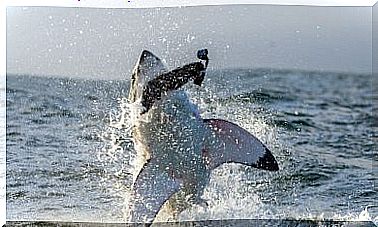Curiosities Of The Sea Pig
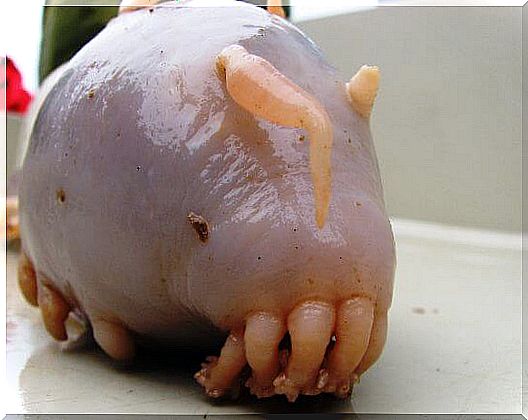
The sea pig lives in the deep waters of the oceans. It is a creature with a translucent body, tubular legs, present even on its head, and resembling antennae and an appetite for decomposing things.
Its scientific name is Scotoplanes globosa and it is a species belonging to the echinoderm group, which includes sea cucumbers, urchins and starfish. It inhabits all the world’s oceans and in some areas it represents 95% of the total weight of animals on the seabed.
Some curious facts about the sea pig
This animal was discovered by the Swedish zoologist Johan Hjalmar Théel more than a century ago. Researchers have since learned that these creatures congregate around dead whales and other sunken carcasses in the deep sea to feed on decomposed meat.
The sea pig is present in all the oceans of the planet
You may not have heard of the sea pig before and it is incredible to know that this species can be found in all the oceans of the world. However, they will only be seen by those who enter very cold and deep waters, about 3.7 miles below the surface.
For this reason, scientists have not been able to gather enough information about them. However, it is inferred that they are social creatures because they are always found in large numbers. They have also observed that the number found is in accordance with the size of the sea pigs.
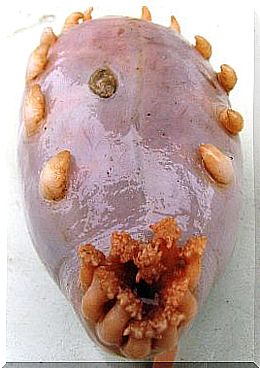
Groups of more than 1 000 individuals are usually made up of small sea pigs. Those groups where the creatures are larger are reduced to about 100 specimens per occupied space, approximately.
They are not antennas, they are also feet
The sea pig moves by walking on the seabed with its five or seven pairs of tube feet. These feet are appendages that can inflate and deflate to move. On the top of the head, the sea pig has structures that look like antennae, but are actually feet.
These upper appendages are modified tubular feet, much like those used for walking. However, your upper feet can help you propel yourself along the ocean. They are also thought to have a sensory function in detecting the chemical trail of a good meal in the surroundings.
In large meetings, they follow the same direction
The sea pig is usually found in large groups, especially when food resources are abundant: such as when there are carcasses of whales and other cetaceans on the seabed and they gather to eat.
The strange thing is that, when covering the bottom of the ocean, they all point in the same direction. However, scientists have determined that this behavior is not accidental.
The reason could be that the sea pig faces the prevailing current, perhaps to detect food spoilage and find the best place to feed.
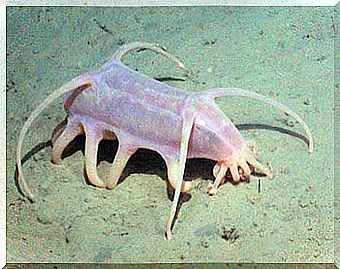
They serve as protection for young crabs
The sea pig is not the only animal that lives on the ocean floor. There are some small crabs and snails that could be easy prey for predators and therefore require shelter. Hence, many make sea pigs their guardians and cling to them.
About 95% of the juvenile king crabs seen in the depths clung to sea pigs. It was difficult for the researchers to spot these tiny crabs with the naked eye. This suggests that predators are also difficult to find.
They also tolerate other parasitic animals
It is known that the king crab is not the only species that knows the benefits of the marine pig. A wide variety of animals, including snails, flatworms, and even small fish, live inside the bodies of sea pigs.
Life in the deep waters of the sea is challenging, especially for the youngest and tiniest animals that don’t know where to hide. And, while the benefit to the parasitic animal is often obvious, scientists are looking to determine whether the sea pig gets anything out of this relationship.
Preservation status and threats
The conservation status of the sea pig has not yet been officially assessed. However, they are not believed to be at risk of extinction due to their global distribution and the apparently abundant number of the species.
Their biggest threat is deep-sea trawling, as the average trawler sweeps, catches, and obviously kills 300 to 600 sea hogs. Perhaps trawling should be taken at once as a practice that creates a serious problem for the future of various marine species.
It might interest you …
Main image source | http://echinoblog.blogspot.com
